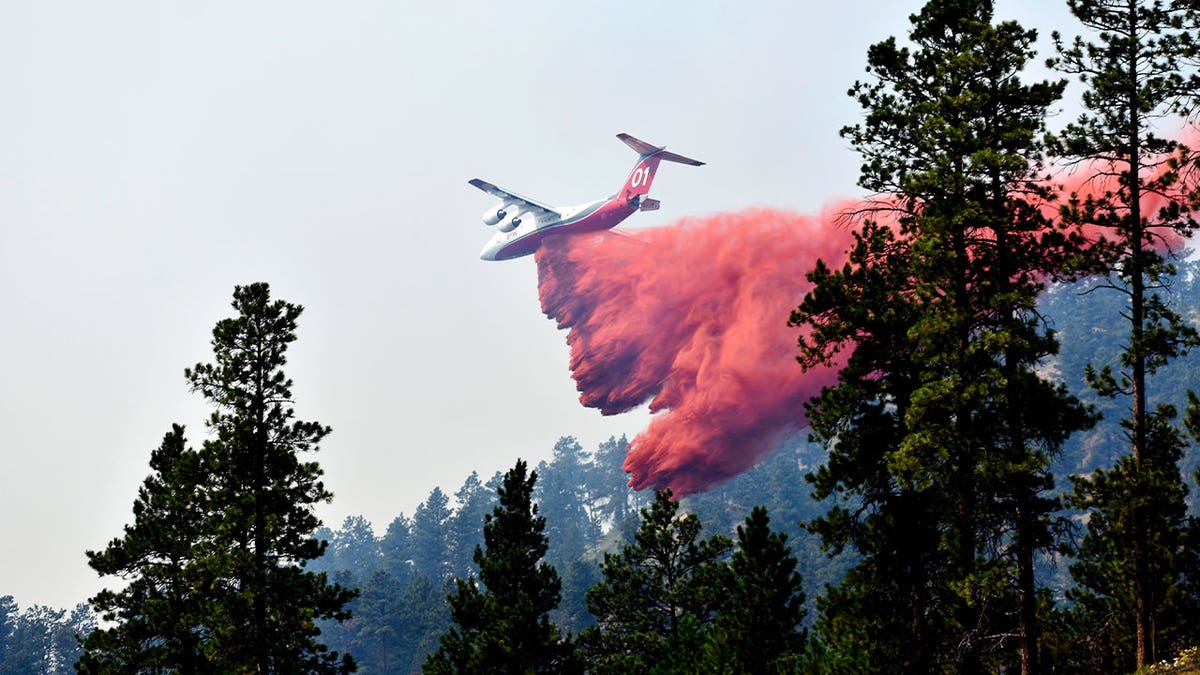Fox News Flash top headlines for October 12
Fox News Flash top headlines are here. Check out what's clicking on Foxnews.com.
An environmental group filed a lawsuit Tuesday against U.S. Forest Service officials that alleges they polluted waterways during their campaigns against wildfires by inadvertently dropping large volumes of chemical flame retardant into streams.
Government data released earlier this year found aircraft operated or contracted by the Forest Service dropped more than 760,000 gallons of fire retardant directly onto streams and other waterways between 2012 and 2019.
The main ingredients in fire retardant are inorganic fertilizers and salts that can be harmful to some fish, frogs, crustaceans and other aquatic species.
NEW JERSEY'S PLASTIC BAG BAN: WHAT TO KNOW
The lawsuit alleges the continued use of retardant from aircraft violates the Clean Water Act.
It requests a judge to declare the pollution illegal, and was filed in U.S. District Court in Montana by Forest Service Employees for Environmental Ethics.

An environmental group filed a lawsuit on Oct. 11, 2022, which claimed that the U.S. Forest Service officials violated pollution laws by inadvertently dropping retardant into streams. Pictured: An aircraft drops fire retardant to slow the spread of the Richard Spring fire in Montana on Aug. 11, 2021. (AP Photo/Matthew Brown)
"It's simply too toxic at the levels used fighting fires," said Andy Stahl, the Eugene Oregon-based group's executive director.
Forest Service officials in recent years have sought to avoid polluting streams during their fights against wildfires by imposing buffer zones around waterways where drops are restricted. Under a 2011 government decision, fire retardant may only be applied in designated "avoidance areas" where human life or public safety is threatened and retardant could help.
CALIFORNIA BECOMES FIRST IN NATION TO ENACT STATEWIDE PLASTIC BAG BAN
Officials in February proposed continuing the aerial retardant program with minor changes. A final decision is pending.
A government study accompanying the proposal determined that misapplied retardant landing n avoidance areas was likely to adversely affect dozens of imperiled species, including crawfish, spotted owls and fish such as shiners and suckers. The study was done in response to new data about retardant that's misapplied, changes in the status of some affected species and changes in avoidance areas.
NEW JERSEY LAWMAKERS CONSIDER TWEAKING PLASTIC BAG BAN AS REUSABLE BAG PLAN CAUSES 'PROBLEM'
Forest Service spokesperson Wade Muehlhof said it was agency practice not to comment on active litigation.


